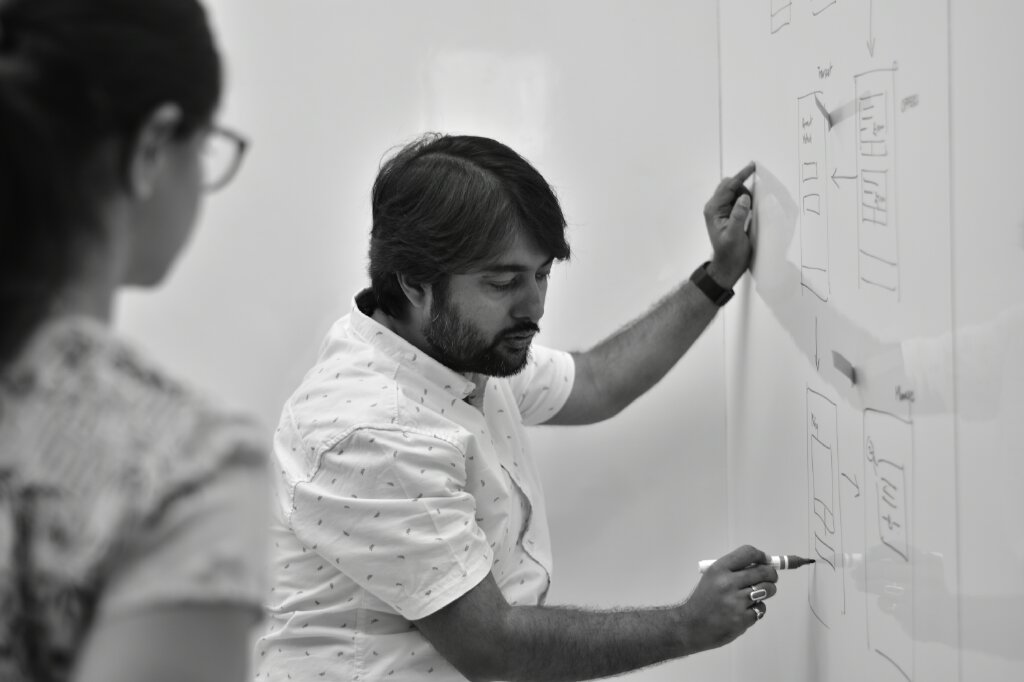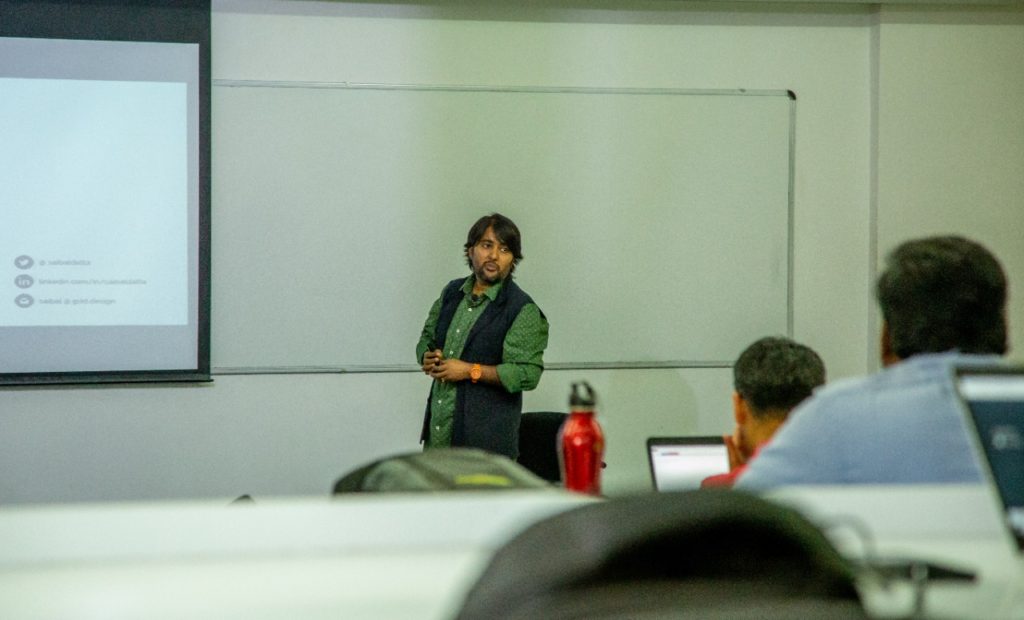
Founder and Chief Experience Designer at GDD, a Design Faculty at The Institute of Product Leadership, ex-Adobe, ex-Infosys, ex- Grameenphone and a Practitioner of the 5S Theory.
Our conversation with Saibal was a lot of fun as we discussed his life at design school, the role of aesthetics in UX, the 5S UX process, fulfilling the business needs without compromising on UX and a lot more over a 40-minute conversation!
– YELLOW SLICE
The (dot) com boom of the 2000s took businesses by the storm. It was the millennium year of the Y2K, and everyone wanted a presence on the Internet while very few knew how. Nobody stressed so much over UX Design that time.
This is when young Saibal, a B.Com. student at Delhi University; empowered with his knowledge about technology, coupled with his interest in art; dreamt to make it big in the (dot) com era.
Saibal put his skills to use and explored the web designing and graphics industry only to realise that design was bigger than art and technology. This curious young mind then took it upon himself to explore and learn more about this industry.
As a self-learnt designer, Saibal was quick to understand the impact that websites and visual representation would have on businesses. Saibal recalls one of his first-ever collaborations with the well-known music band: Indian Ocean. He says, “I collaborated and tried to learn everything hands-on. I designed the website and posters for Indian Ocean and stuck around with them for 2 to 3 years.”
The exposure to various forms of art, technology and design pushed Saibal to start a collective along with his friends that focused more on learning than earning from web designing and creating graphics. In this process, they worked for multiple NGOs and Music Bands for free.
During these times, he realised that web and graphic design though a relatively new field had immense potential. He took the brave decision of dropping out of B.Com. and studying design at a proper design school.

Journey at the Design School:
His relatively older age prevented him from gaining access to the more premiere schools like the NID. As a result, he ended up in the city of Pune at the Symbiosis Institute of Design. About going to a design school, he says:
“I went to school without any expectation and only for the space it offered. I wanted to meet more like-minded people and gain exposure more than anything else”
Saibal believes that design education in India is still maturing and evolving. However, the experience of interacting with people from the industry and other design schools and conferences shaped his mind. What differentiated Saibal from his classmates was his lack of inclination towards specialisation. So, while others focused on one particular specialisation, he, on the contrary, tried his hands on films, design, theatre and graphics.
It was his prior exposure to technology that shaped his journey towards UX Design. While other fields like graphics and industrial design were classical and safe, UX was new and would be quite a journey. He says,
“I realised that UX Design was something unknown and undefined that I can define myself. I wanted to be a part of its making and leaving a mark.”
The Role of Art and Aesthetics in UX Design:
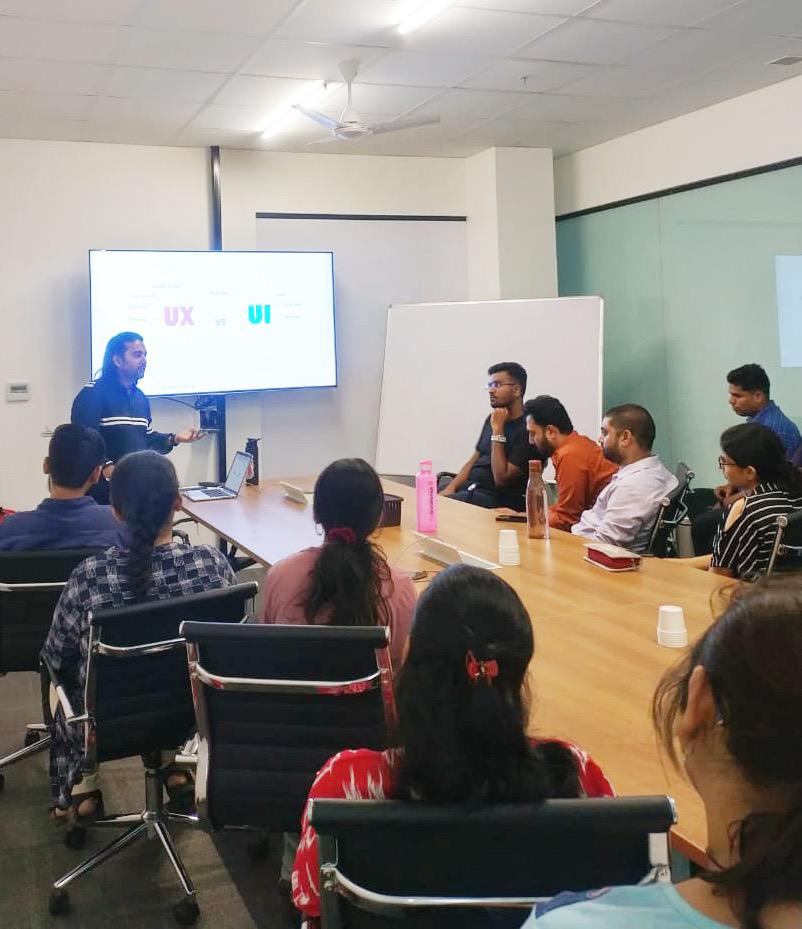
Though many current players focus completely on functionality, according to Saibal,
“In the end, UX is an emotion. It is the overall feel and satisfaction of a user”
This he believes is the current struggle.
It is art and aesthetics that drive emotions. Whenever someone sees a piece of art, it provokes an emotion within the person. This provocation of emotion can be harnessed to fill in the void and drive user experience.
Balancing the Emotions of a Business Owner and a User:
Pointing towards a common industry practice, Saibal very rightly says,
“Most designers directly jump into creating without understanding the need of the business owner as well as that of the user”
He stresses how important it is to align the business goals with user needs to deliver a product that makes both the parties happy. Understanding the emotional pattern and behaviour of different consumers and conveying about it to the product team is what occurs to be a challenge.
5S UX Design Process:
At GDD, Saibal uses a process formulated by Jesse James Garret in his book “The elements of UX” called the 5S UX process. According to him, having a well-structured process makes it easier to guide the other stakeholders while making it easy to explain and relate.
After having worked in multiple organisations like Adobe and Grameenphone, Saibal realised that each one has its own process. While working at Adobe, where he led a team of 25, the team was a part of a bigger team in the US. It was following a uniform procedure that helped them stay connected and increase their efficiency at work.
He also points out that there are multiple theories around processes with different names. However, the core activities remain the same.
For GDD, Saibal chose the 5S model as it’s easy to remember and can be used to keep everyone on the same page. Not only does it help explain the product team about the entire procedure, but they also encourage their clients to use the same Lingo. He also says,
“This model helps us bridge the gap between the designers and the non-designers”F
The 5S of the 5S UX Process are as follows:
Strategy:
GDD has developed its own framework that uses various tools and techniques to understand user personas and behaviour. They also do a product workshop to understand business goals and user needs. They then use this understanding for journey mapping that aligns with the product’s business goals.
Scope:
A major component of scope includes defining features and functionality.
It begins with writing user stories where the product owners articulate their requirement and this helps designers understand what features need to be designed.
They then narrow down to ascertaining what kind of experience they are trying to create under different scenarios and use cases.
Structure:
Here is where the real work beings. A framework is designed based on the format such as a website or a mobile app.
This framework is then used to build user flow and information architecture.
Skeleton:
It is at this stage that the framework comes into being.
It starts with designing loadability wireframes and sketches and then proceeds towards high fidelity wireframes, prototyping and testing.
Surface:
With all the major technicalities in place, it is at this stage where we focus on the visual designing of the interface.
Here, a UI style guide is designed and various other elements such as typography, illustrations and icons are designed.
Using this model ensures that the product is developed in phases with great attention to every detail.
Balancing Personal Relationships at Work:
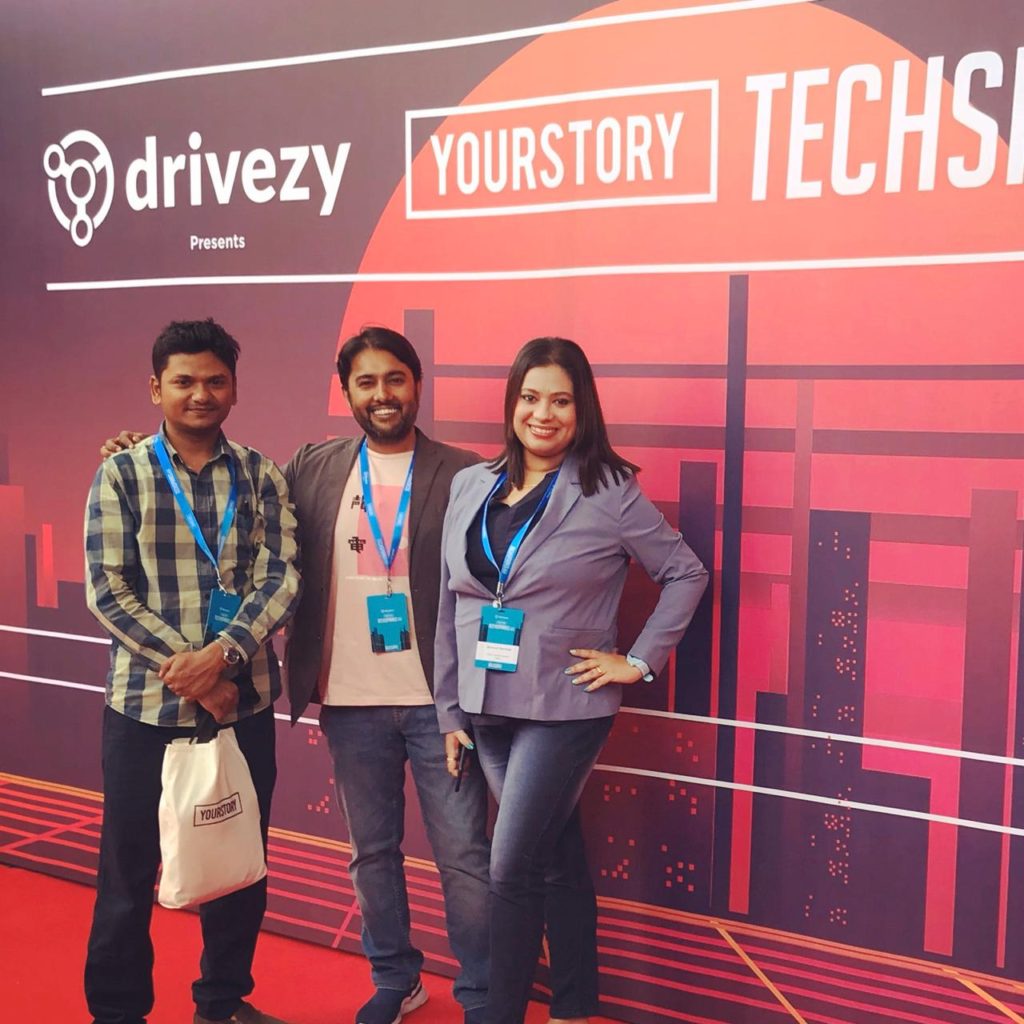
“We have defined our roles at work.”
About dealing with disagreements, he mentions as to how over the period of time, they have learnt when to start and when to stop. He also rightly points towards maintaining a professional suite for all work-related discussions without letting emotions come in the way and similarly not let normal life be influenced with discussions relating to work.
Building a UX Design Portfolio:
Saibal has been a mentor, guide and guru to many students as well as professionals from design and non-design backgrounds and helped them grow in their career.
Saibal says,
“Know the purpose of your portfolio. Is it for getting a job, an internship, a master’s Program or an investor?
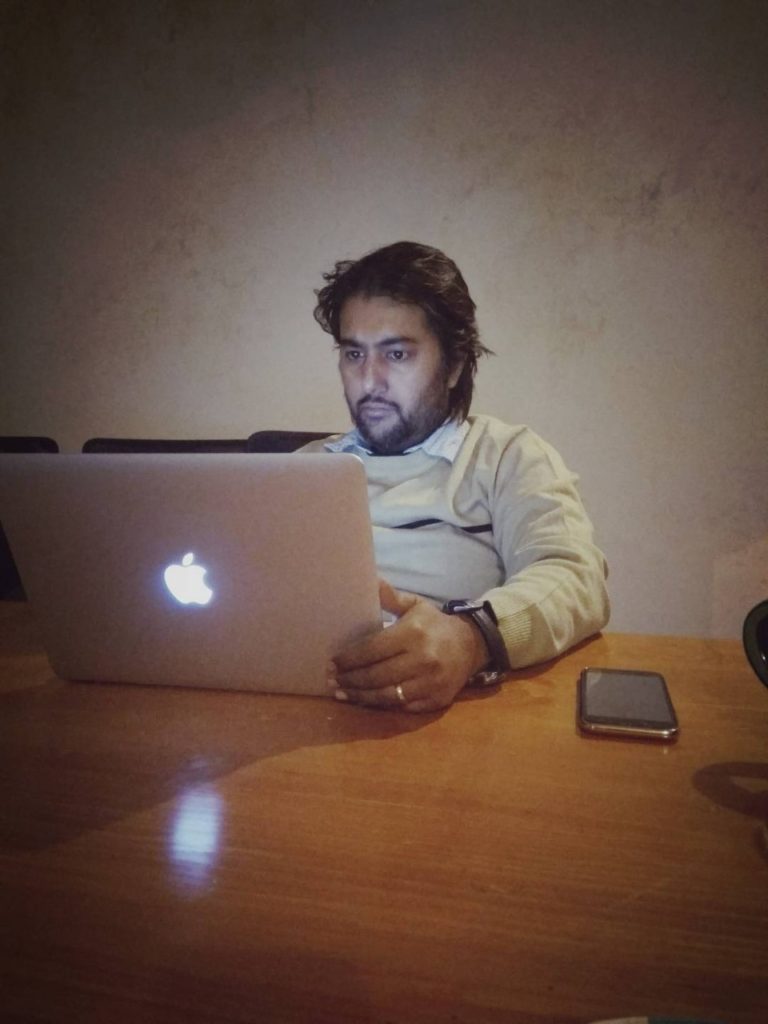
He also stresses on the evaluation of one’s level and then determining the content of the portfolio. An amateur may just include screenshots of his projects and get away with it. However, an experienced professional needs to tell more details. He also mentions that,
“Portfolios should not be treated like presentations. It is a process of showing your work and telling how you did it as a story.”
Great portfolios are a result of strategy, planning and research.
Saibal’s Eureka Moment!
Saibal talks about his time at Infosys in the year 2009/10 where he was a part of the design team for a hardcore banking software: Finacle. The 6000 engineers who worked on it, were simply not in the favour of experience designing. To this, he reacts,
“How do I design in insolation? The designs would never get incorporated into the product without the engineers’ support!”
His only goal then was to ship his design as he answered multiple questions from engineers about his choice of icons, dropdowns and checklists. He says,
“Being able to convince them and then seeing it in the live product, especially as a young designer in a corporate setup was my eureka moment! ”
He also mentions that no matter how much he would grow in this field, seeing a user happy and satisfied with the product and its experience never fails to make him feel proud.
Next-Gen Technology that will Impact UX:
Ask him this and he answers the same second, “Voice!”
Saibal recalls having worked on a project to design a voice interactive (IVR) system for feature phones where each number denotes with a command, back in the days with Grameenphone in Bangladesh. His job then, was to optimise the processes and minimise the interaction points. Saibal believes that this is similar to the modern-day Alexa or Google Home. He says,
“In the future, we may not have to design icons and graphics. Instead, we would be designing conversation experiences”
Rapid Fire Round:
We had our own version of Koffee with Karan with Saibal Datta!
I: What’s your bible? Books or blogs?
D: Blogs
I: Videos or Podcasts? Favourite?
D: Podcasts: The recent one released by Futur.com
I: The first app on your phone that you use every morning?
D: WhatsApp and Email
I: Best design event attended?
D: Icograda 2007, Mumbai and I also met my idol Massimo Vignelli
I: Your favourite crowdsourced knowledge portal?
D: Future, The Fast Company and Designer News
I: The Gas Stove or the Microwave?
D: Gas Stove
